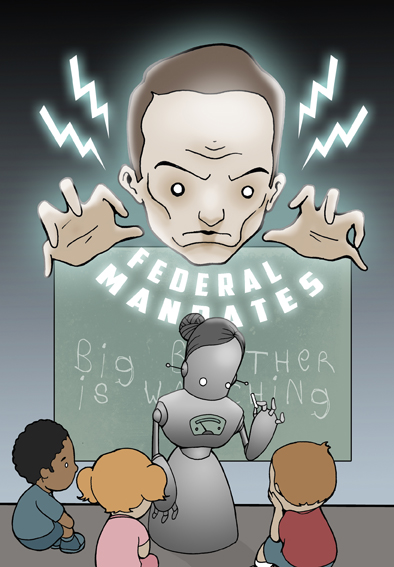
Two simple words, Common Core, can generate many emotions. Fear, confusion, concern and anxiety, to name just a few.
One problem is that people don’t understand what it means for their student’s education. Will the arts be ignored? Will the standards result in cookie-cutter learning? Does Common Core allow the federal government to control each state’s educational choices?
But Common Core may not be as scary as it sounds. According to Sydnee Dickson, Director of Teaching and Learning with the State Office of Education, Utah has had content standards since 1984. Common Core came about because of a disparity between states. “Many states did not have statewide standards in the past. Yet states are judged one against another without having standards and expectations in common,” she says.
To solve that problem state officials came together to develop a common set of student performance standards. There are currently 45 states that have adopted the standards in mathematics and English. Now students who move from one state to another will be able to quickly adapt to a new school since the expectations are the same. The only differences are how they are implemented.
“The standards do not dictate instructional strategies or curriculum materials. This is and has always been, up to the local school, district and classroom teacher,” Dickson says. People who oppose the standards complain about federal intrusion. In fact, no federal funding is used for the program.
What about those who say the core curriculum doesn’t leave time for arts and creativity? Common Core addresses that by incorporating creativity and problem solving. “The standards emphasize application of knowledge versus knowledge just for the purpose of passing a test. The application of skills applies to all content areas, incorporating the arts and other subject areas into mathematics and language arts. There is a de-emphasis on textbooks, and an emphasis on the use of teamwork, problem solving, creativity, and use of technology,” Dickson says.
The fear is that the Utah Data Alliance is collecting information about things like political and religious preferences.
Another concern of those opposed to common core is that they believe that is it tied to the State Longitudinal Data System. The system is the way the State Office of Education collects and stores education data. The fear is that the Utah Data Alliance is collecting information about things like political and religious preferences. But according to the USOE website, “Common Core Standards do not contain requirements related to data collection or data reporting. The Common Core Standards have no impact on data collection or reporting.” It goes on to further clarify that the type of information collected is name, date of birth, race/ethnicity, gender, special education, state assessment performance, English language proficiency, grades, credits, enrollment dates, school and district. The state office does not collect information on political affiliations, sexual behavior or attitudes, religious practices, psychological testing, DNA, student address or e-mail, or the income of the student or family.
One of the goals of Common Core is to prepare American students to compete globally and to prepare students for the workplace. Some fear that students will be fast-tracked to areas of study without enough exploration, but with the United States falling behind the rest of the world, it is a way to help raise the bar on student performance. The goal is to prepare more students for college courses, decrease the number of students needing remedial help as college freshmen and to increase graduation rates for college and high school. With local input, the program is always being refined to better serve all students.
So which is it? Is Common Core the boogeyman in the closet, or the answer to educational deficiencies? Take some time, do your own research and decide for yourself. §





